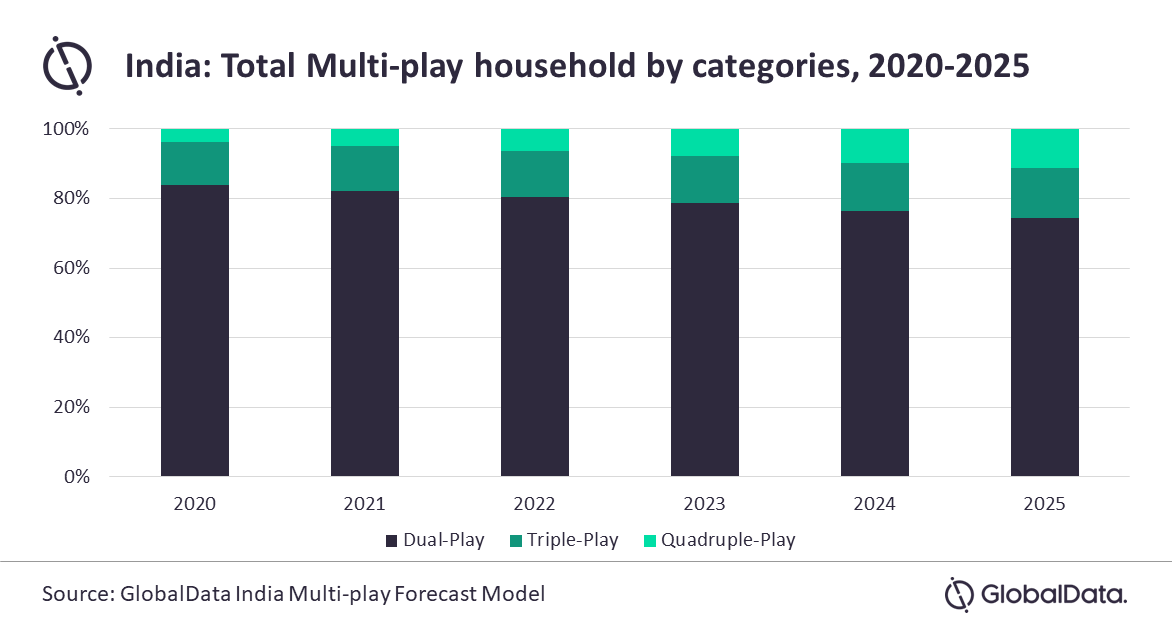
After more than 40 years of operation, DTVE is closing its doors and our website will no longer be updated daily. Thank you for all of your support.
Indian market set for increased multi-play focus
The Indian TV market is set to continue its growth in the coming years.
According to GlobalData, multi-play service revenues in the country are expected to grow at a compound annual growth rate (CAGR) of 5.4% between 2020 and 2025. This is largely attributed to the growing adoption of multi-play bundles supported by improving fixed infrastructure in the country.
Double-play bundles accounted for 83.9% of the total multi-play households in 2020, followed by triple-play with 12.3% and quad-play bundles with 3.7%. The continued investment in double-play offers from the likes of Airtel, Jio and BSNL will see this continue to lead the way.
Consumer spend will also increase in India, though it will still be well behind countries in the global north. The average monthly household spend on multi-play bundles will increase slightly from US$9.28 in 2020 to US$9.67 in 2025.
Deepa Dhingra, senior telecom analyst at GlobalData, said: “The ongoing investments on the fiber-optic network expansion has been enabling access to high quality broadband services for more customers in India, which will support telecom service providers to develop and promote multi-play bundles over the forecast period. The operators in India have also been integrating value-added services with their multi-play bundles to reduce churn and enhance customer loyalty.
“BSNL was the market leader in terms of number of multi-play households in 2020, followed by Bharti Airtel and Jio. All the major service providers in India have been promoting complementary access to OTT applications such as Yupp TV, Amazon Prime Video, Voot and Netflix to promote the adoption of multi-play bundles. Furthermore, Jio’s aggressive customer acquisition strategy also includes 30-days free trial, including unlimited broadband service, free 4K set top box and access to 13 OTT applications.”



